Existing User Log In
New User Registration
Register for a free account to gain full access to the VGChartz Network and join our thriving community.



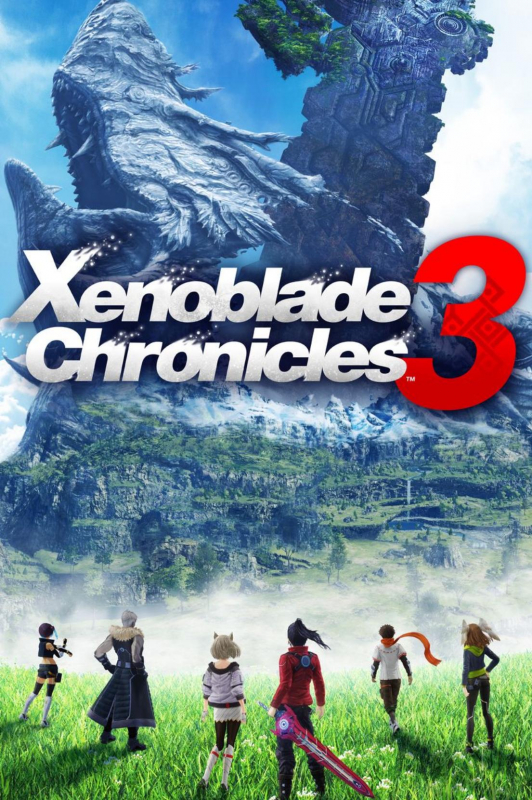

America - Front


America - Back

Monolith Soft
Role-Playing
 07/29/22 Nintendo
07/29/22 Nintendo  (Add Date)
(Add Date) 07/29/22 Nintendo
07/29/22 Nintendo
| Owners: | 19 | |
| Favorite: | 6 | |
| Tracked: | 0 | |
| Wishlist: | 0 | |
| Now Playing: | 7 | |
Tetsuya Takahashi, the creator of Xenoblade Chronicles, once suggested that the series is defined by its ability to keep the players enthralled in the game’s world. It is, in fact, the world that he spends the most amount of time with, often creating elaborate and gargantuan titans that feel like indefinite realms, which are simultaneously wondrous and treacherous. While this, at its core, has been part of the series since its inception, each game has differed so significantly in its overall world, gameplay elements, and narrative, that they feel like self-contained titles between which there is little continuity. That is, whatever improvements Monolith Soft appears to make, they're counteracted by a new and fundamental change which introduces new issues to fix.
This is one reason why many feel the first Xenoblade Chronicles release is superior to the rest. Of course, this is not to say that the spin-off Xenoblade Chronicles X or its direct sequel Xenoblade Chronicles 2 (as well as its DLC) are bad. Far from it; Monolith Soft is amazing in its world building, while keeping its gameplay both intriguing and interesting. However, I never felt like the series was progressing. Rather, the games were becoming branching paths of experimentation in a related universe. Until now, that is. Xenoblade Chronicles 3 truly feels like an amalgamation of what works in the Xenoblade Chronicles series, and I would argue that this is the best the series has ever been.
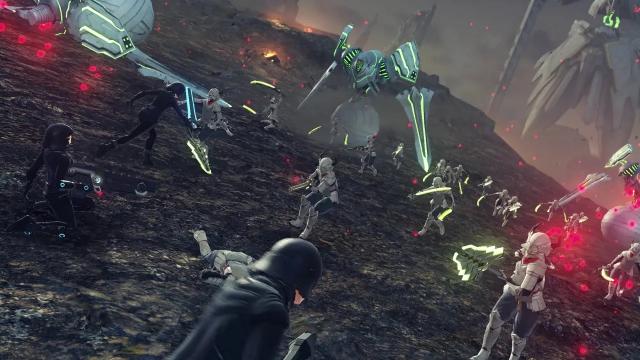
There may be some small spoilers contained within this review. I assure you that these are relatively minor, but for anyone who is considering playing this game and wants a completely fresh and unaltered perspective, I recommend turning off your computer, getting up, and going to your local store to pick up the game and start your play session. For everyone else, let’s move on.
Xenoblade Chronicles 3 is set in the world of Aionios, a land riddled with war between the nations of Agnus and Keves. In this world, people are raised for the sole purpose of increasing their “flame clocks” by killing the opposing nations' soldiers. The more kills a faction has made, the higher their flame clocks, and the better food, equipment, and support they receive from their nation. Lives are ravaged by war, chaos, and death, with no end in sight. In addition, people only live ten years, or “terms”. At the end of someone’s tenth term, they're given a homecoming ceremony, which serves as the way by which their lives are ended for new soldiers to take their place.
It’s a hopeless life, and one of the most macabre I’ve experienced in a Nintendo game yet. This feeling is amplified through Monolith Soft’s exceptional environmental detail. War torn desolate areas are strewn amongst the lively planet. You get the feeling that the war is beginning to truly tear the planet apart. This is especially noticeable when you begin to visit familiar locales from the Xenoblade Chronicles universe and witness how they’ve been affected by the ongoing conflict. When this is contrasted with the beauty and tranquility of the few areas where the war cannot reach, you can feel a sense of irreparability, as if the planet has been permanently scarred by the scourge of two nations clashing for reasons you don’t understand.
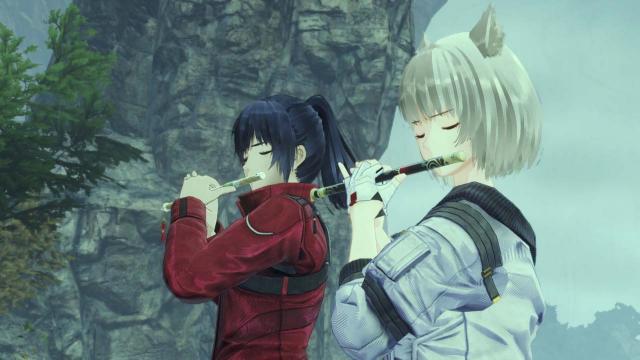
Despite the world being hopeless, the story is one of hope. You begin as Noah, Lanz, and Eunie, three Kevesi soldiers who discover a man protecting a strange device. You encounter three Agnian soldiers - Mio, Taion, and Sena. Instantly a fight ensues, insults are thrown, and you get a feeling that each side truly hates the other, despite not understanding a thing about them. Eventually the fight is interrupted and the true enemy is revealed: Moebius, a gigantic beast of insurmountable power. In order to defeat Moebius, a power is unsealed which links these Kevesi and Agnian soldiers into an unbreakable bond and allows them to become Ourobouros, similarly huge beasts created through the interlinking of one member of each nation.
After unlocking this power, the group is able to defeat Moebius. This defeat is not taken lightly, as they are now marked, causing them to become an enemy of both nations and ostracized from everyone, Kevesi and Agnian alike. Without a home to go back to, the group joins forces to travel to “The City” , an unknown place of mystery but one they feel could provide them with refuge. Along their travels, they choose to liberate colonies, to free them from their flame clocks and the never ending war between Keves and Agnus.
There are a few “missed beats” within the story, and ideas I wish had been explored further, such as the colony that is so incredibly impoverished that everyone within it simply accepts that they will soon pass away due to the diminishing of their flame clock. However, I think the story itself is a strong point overall. You begin to form relationships with these characters, and truly see the interactions between them all begin to blossom. The characters change and hopelessness turns into hope. These opposing soldiers begin to form a family as they battle forces beyond their control. There are surprises abound, and some parts of the story make you ponder complex philosophical ideals. I found myself linking this game with ideas of capitalism, civil complacency, propaganda, and terrorism. That said, I do wish some of the more complex villains would have had a bit more screen time. Also, be prepared to watch a LOT of cut scenes. Though these can be easily skipped and watched at your own pace in the main menu, the amount of cut scenes still felt a little intrusive near the end of the game.
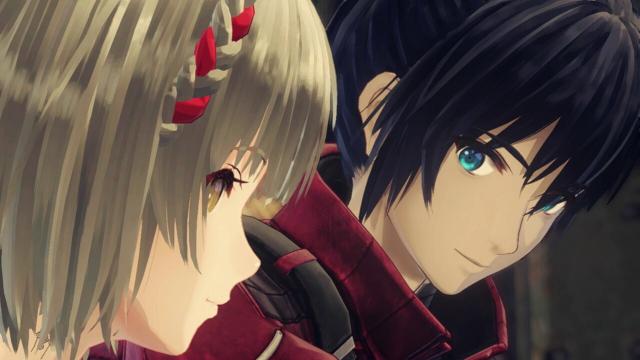
The combat is a highlight of Xenoblade Chronicles 3, and I feel it is the best of the series. Though your characters may utilize “blades”, these are not collected through a gacha-esque mechanic. Rather, you utilize classes to change your blades. There are three main types of classes: attacker, defender, and healer. The defender's role is to gain aggro from enemies and have high HP and defense, attackers emphasize positioning and blade combos, and healers are able to revive allies and heal them. These basic class types are just building blocks, and each actual class will play quite differently. Initially you're only given six classes through Noah, Mio, Sena, Eunie, Taion, and Lanz. However, throughout your journey you’ll encounter a variety of characters that will join your fight, and these will each allow you to adopt their class. Each class can be leveled up independently for a variety of benefits. Though I did miss the type matching of Xenoblade Chronicles 2, I didn’t exactly miss the frustration of having to grind for rare core crystals to get the blades you want. Making classes tied to side quests and main quests is a lot more user friendly.
Talent Arts make a return, and timing your button presses to your auto-attack still provides you with bonuses. However, depending on the nation of your character (either Keves or Agnus), Talent Arts either refill with time like in the first Xenoblade Chronicles game, or they refill the more you attack, as in Xenoblade Chronicles 2. Initially you only have three talent arts, but then you're given three more as you upgrade your class. With these other three talent arts - which can be hand selected based on the classes your character has - you're also able to utilize fusion arts which increase your interlink level. The interlink system allows you to become a gigantic ouroboros being to deal massive damage for a limited period of time. The chain attack system also makes its return, and it’s even more addicting than in other games. I was able to easily create massive chain attacks destroying opponents, which felt satisfying without being overly complicated or requiring significant preparation during battle.
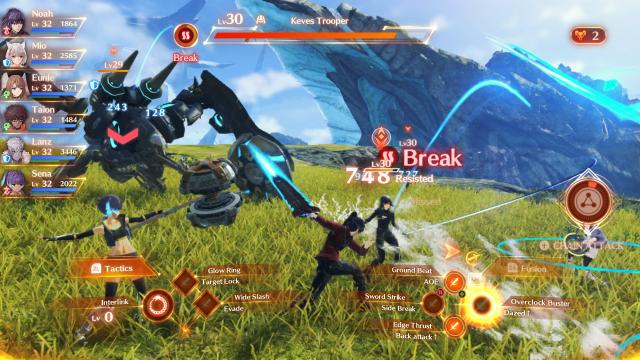
Does all of this seem rather daunting or confusing? On paper, it feels complicated. However, one key improvement that Xenoblade Chronicles 3 has is its tutorials. Yes, there are copious amounts of tutorials. However, there are two key features that help mitigate the tutorial overload: the ability to turn off tutorials and the ability to revisit prior tutorials. This quality of life change from Xenoblade Chronicles 2 is huge, and just one of many. Other quality of life improvements include: automatically selling junk items for money, a much improved map system which shows where you have and haven’t explored, easy-to-follow tracking to any quest that you can turn on and off at your whim, specific indicators of your position relative to an enemy (front, side, or back), a simpler gem crafting system where one gem can be used for the whole party, and more. In fact, there are so many changes here that I could spend this entire review listing them all. It feels like Monolith Soft scoured through each and every single potential critique and implemented a system targeted at eliminating it. It’s really that good.
Though exploration has never been an issue for the series, Xenoblade Chronicles 3 makes the world worth exploring even more. To begin, the world is both beautiful and massive. There are entire areas at the beginning of the game that I didn’t even notice were there, despite taking my sweet time. The amount of side quests and hidden content is massive, and you could easily spend a hundred hours or more outside of the main quest just seeking out extra content. There's a bit of a metroidvania component as well. You're given skills which allow you to traverse various areas of the land, such as the ability to climb up swiftly falling sand without slipping. This means that backtracking has more purpose. Remembering where these areas are once you receive the required skill helps reinforce exploration without feeling too artificial. Yes, there are still areas that are guarded by overleveled monsters, but in comparison to the other entries in the series, these are few and far between.
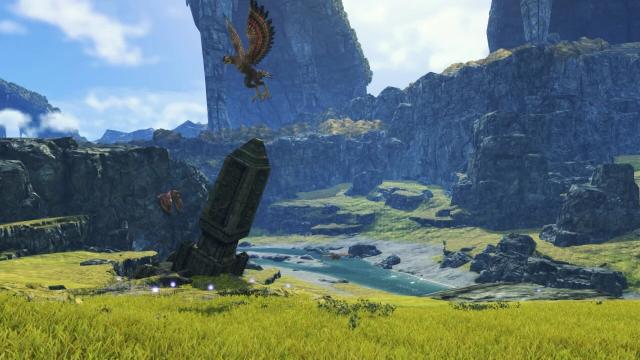
Xenoblade Chronicles 3 also reinforces exploration through the liberation of colonies. Liberating colonies provides many benefits, some of which are extensions from previous Xenoblade titles, albeit much improved. For example, colony affinity can be increased, but relationships between colonies can also be increased, leading to Agnian and Kevesi people beginning to interact and help each other in a variety of ways. Though various affinity mechanics have been implemented in the Xenoblade games of the past, this implementation helps the world feel more interconnected overall. It's no longer just a relationship between you and the world, but the world within itself. Liberating a colony also provides a new trading area for gear to improve your team and unlocks new side quests which offer new rewards, introduce a new class hero to join your team (and subsequently copy their class), and may even provide you with a new skill to use for exploration. Whatever your desire may be, it feels meaningful and impactful and less like fodder shoved in for padding.
The graphical improvement from Xenoblade Chronicles 2 and Xenoblade Chronicles: Definitive Edition is not one to take lightly. This is, in my opinion, the best looking open world game on Switch. The materialistic properties are both realistic and high resolution (relative to the Switch hardware, of course). The character models appear more complex and mature than in Xenoblade Chronicles 2. This in and of itself would be evidence of an improvement in the rendering engine, but Monolith Soft decided to go one step further. Screen Space Reflections are now present in portable mode where they were absent before, a nice bokeh depth of field effect is present during cut scenes, and there are improvements in level of detail and texture filtering. The image quality may be the largest step up. Monolith Soft has incorporated a type of temporal upscaling (i.e. the utilization of previous frame data to improve the image quality of the current frame). Essentially, this allows for the game to render at a lower native resolution while still appearing higher resolution. Though this isn't as fancy as more advanced AI rendering techniques (e.g. FSR 2.0, DLSS), it's still very effective. The only giveaway is the disocclusion artifacting and ghosting, which appears more extreme as a result of the lower overall rendering target.
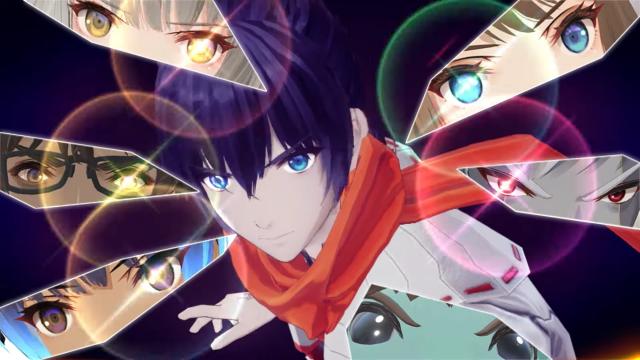
There are some other minor nitpicks with regard to the graphical fidelity that I would like to note, however. There is noticeable pop-in for objects, though not it's not as egregious as its predecessor in this respect. In one particular location, you'll notice a very obvious limitation in the distance rendering of SSR and objects due to your fast speed, and it feels somewhat distracting. Luckily, this is isolated to this particular location and does not affect the majority of the game. Lastly, the framerate is not consistent. Though it often hits its target of 30FPS when not in combat, it does appear to falter the second you enter combat. It didn't significantly impact my play with the game, due to the genre, but it’s something to be aware of. Still, it’s important to remember the hardware that the game is running on; it really feels like the Switch is punching a bit above its weight.
So how good is Xenoblade Chronicles 3? It’s fantastic, and a testament to how much Monolith Soft has grown as a developer. I've never been as invested in a lengthy RPG as I have this one, and I'm more than willing to start a second 100+ hour playthrough immediately. It's so good that I’ve pre-ordered the DLC (which is something I never do). I even felt reluctant to begin this review because it meant I had to finish the game. Though there are flaws that keep it from perfection, I feel like it’s as close as the series has ever gotten, and I cannot wait to see what comes next.










|
|
|
|
|
|
|
|
|
|
|
|